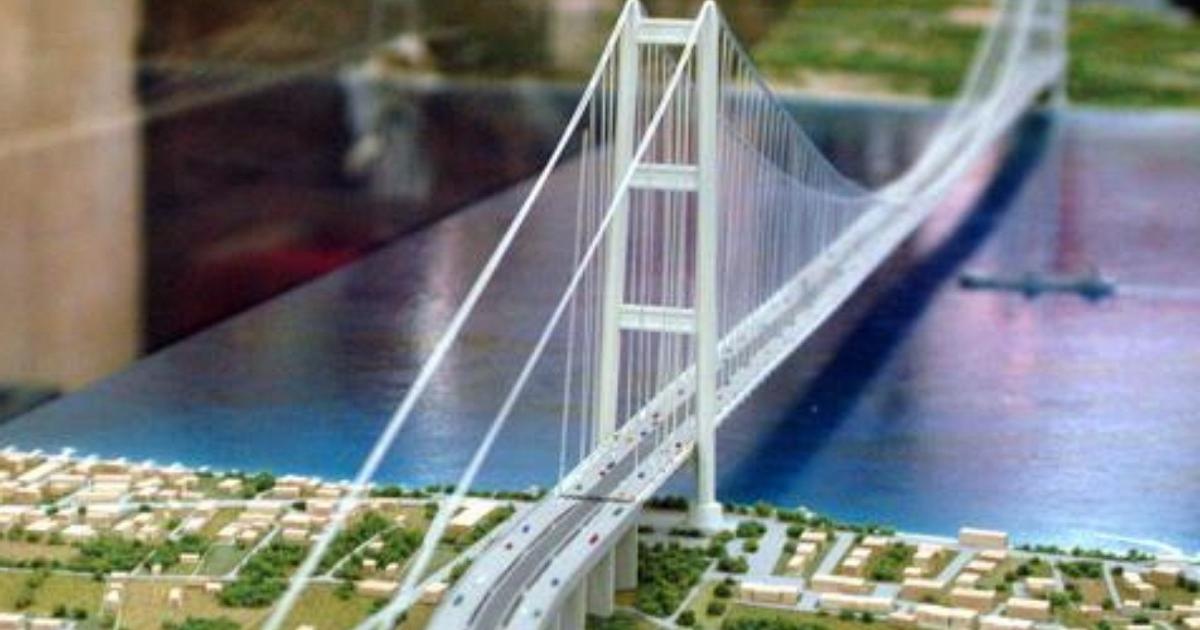Green light to the Bridge Decree: the offices have completed the last investigations, substantially confirming the text that had been approved in the Council of Ministers last March 16 with the formula "except for agreements". This was announced by a note from the Ministry of Infrastructure and Transport led by Matteo Salvini. It is, underlines the ministry, "a historic choice, which opens up to a world record infrastructure with a strong green connotation: the Bridge will allow a drastic reduction in CO2 pollution and a significant decrease in discharges into the sea".
For the MIT "the economic aspect is significant: the cost for the construction of the bridge and all the railway and road access works on both banks is now estimated at 10 billion". The MIT notes in the note that "the Bridge is an investment with very long-term benefits for the entire country-system with particular reference to the South. Especially in light of the interventions, already planned, to modernize the railways in Calabria and Sicily with speeding up and high-speed/high-capacity routes. With the completion of the high-speed train in the two regions and the commissioning of the bridge, it is estimated that travel times from Rome to Palermo will now be halved by 12 hours, of which an hour and a half for the transport of the wagons alone. A significant saving for citizens, businesses, logistics. The Bridge over the Strait represents a strategic work for the completion of the trans-European transport networks and is part of the route of the Scandinavian-Mediterranean Multimodal Corridor".
"The stable crossing over the strait was designed according to the suspension bridge scheme. The technical project currently available consists of about 8,000 drawings and provides for a length of the central span between 3,200 and 3,300 meters, compared to 3,666 meters of total length including the side spans, 60.4 meters width of the deck, 399 meters of height of the towers, 2 pairs of cables for the suspension system, 5,320 meters of total cable length, 1.26 meters as diameter of the suspension cables, 44,323 steel wires for each suspension cable, 65 meters high of central navigable channel for the transit of large ships, with a volume of anchor blocks equal to 533,000 cubic meters": this is the description of the Bridge over the Strait of Messina that comes from MIT.
The Ministry of Infrastructure and Transport also explains that "the work consists of 6 road lanes, 3 in each direction (2 + 1 emergency) and 2 railway tracks, for an infrastructure capacity of 6,000 vehicles / hour and 200 trains / day. The project also involves the use of railway infrastructure to create a local public transport service between the two cities of Messina and Reggio Calabria. The bridge was designed with an earthquake resistance of 7.1 magnitude on the Richter scale, with a ''third generation'' aerodynamic deck stable up to wind speeds of 270 km/h".
"The history of the work - recalls the MIT - is decades old. It starts in the 70s; in 1981 the company Stretto di Messina was established. In 2003 the preliminary project was approved. In 2009 the work was reinserted in the Economic and Financial Planning Document among the strategic infrastructures. In 2010 the final project was delivered to the company Strait of Messina. Mario Monti's government decides to stop everything. Decree-Law no. 179 of 2012 establishes the lapse of the Concession Agreement entrusted to the company Stretto di Messina, as well as all the contractual relationships stipulated by the same with the successful bidders of the public tenders mentioned above. By Decree of the President of the Council of Ministers of 15 April 2013, the Company is consequently liquidated".
The MIT also clarifies that "concretely, the bridge operation starts again like this. First of all, the company Stretto di Messina, in liquidation, returns to performance and turns into an in-house company. The corporate structure provides for the participation of RFI, Anas, the Regions of Sicily and Calabria and for a share of not less than 51% of Mef and Mit. The latter is assigned functions of guidance, control and technical and operational supervision of the company with regard to the activities subject to concession, a circumstance that will guarantee the exercise of a decisive activity of guidance on the strategic objectives and decisions of the company".
"It is expected - concludes the MIT in the note - the establishment of a Scientific Committee for technical advice, supervision and guidance of technical design activities. The final design of the bridge is revived, which must be integrated and updated according to the prescriptions and regulations in force. The contracts already stipulated are revived, subject to the elimination of the litigation"

